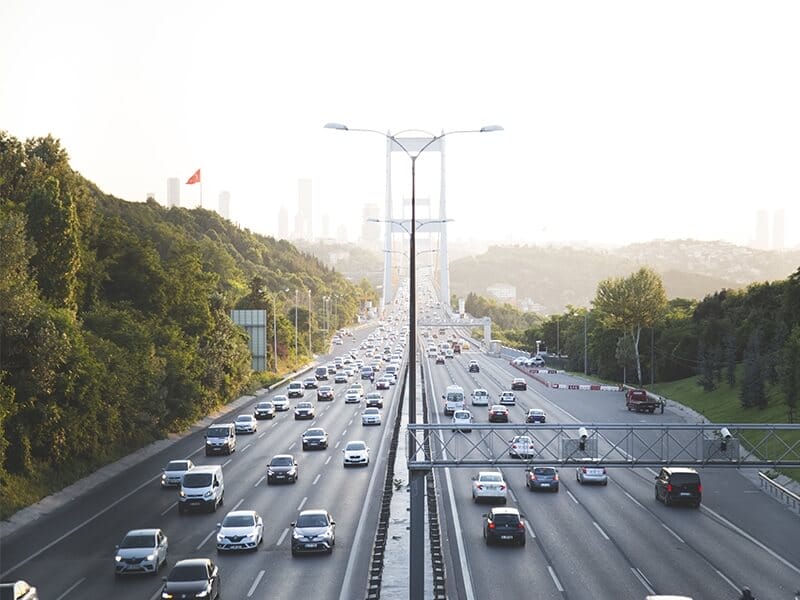
Urban Air Quality – Gas Detection
Our atmosphere is dynamic. Biological, physical and chemical processes contribute to ‘clean air’, a gas mix which is remarkably well balanced for life and free of toxic gases and particulates.
Oxygen is at as high a concentration as enables aerobic organisms such as us to breath easily, whilst not so high as to cause unquenchable forest fires. Carbon dioxide is plentiful enough for plants to grow, both as a source of carbon and in retaining sufficient but not too much warmth from the sun. Elements essential for life such as sulfur and iodine are transported from land to sea in the form of volatile organic compounds (VOCs).
Many gases, which are toxic or harmful to life are removed by chemical and physical adsorption on solid particles (particulates) which ultimately fall out of the air under gravity as dust or rain. What is more, through a series of chemical reactions, including reactions with sunlight (photochemical reactions), the atmosphere is kept almost completely free of specific VOCs released by plants, it would seem to their own and wider advantage. For example, it has been recently established that on being bruised, leaves release VOC messengers (pheromones) that attract predators of leaf eating insects!
Gases and particulates arising from human activity face exactly the same processes as those realised naturally: being either photochemically oxidised and/or in forming and condensing on particulates which ultimately fall out as dust or rain. However, the sheer volume of certain ‘primary pollutants’ discharged by human activity can be hazardous in itself, as well as in generating ‘secondary pollutants’ through various reactions. Also, high concentrations of VOCs, for example, when released into the air, may ‘overwhelm’ the very low concentrations of highly reactive atmospheric cleansing agents in air, such as OH and NO3 so as to reside in the air unchanged for longer times than they would be in cleaner air.
Primary pollutants, released directly into the atmosphere, include:
- NO and NO2 (‘NOx’), chiefly from vehicle exhaust and coal fired power stations.
- SO2 and SO3 (‘SOx’) primarily from sulphurous coal burning stoves and power stations.
- CO from vehicle exhaust, wood and coal burning,
- VOCs apart from methane from the following sources;
– Unburnt hydrocarbons from vehicles. This pollutant is eliminated where legislation ensures catalytic conversion of unburnt hydrocarbons.
– Solvent release and spills. These may arise from poorly controlled industrial plant process, fugitive emissions and spillages, but also a feature of urban pollution due to volatilisation of solvents in domestic products such as cleaners and polishes.
– Terpenes from forest fires.
Particulates released directly into the atmosphere such as;
- Metal oxide particles generated on vehicular breaking, coal burning, mineral processing.
- Soot from diesel exhaust.
- Tyre wear.
- Polyaromatic hydrocarbons (PAH’s) ash and soot from forest fires, stubble burning and wood burning stoves.
Secondary pollutants, resulting from action of sunlight on NOx and VOCs, are:
- Ozone, O3, which in the lower atmosphere is very harmful to all lifeforms.
- Aldehydes such as formaldehyde, a harmful biocide.
- Peroxyacyl nitrates (PANs).
- A resultant photochemical or ‘Los Angeles’ smog comprising particulates often containing metal oxides, nitric acid, PAN, dissolved VOC’s and SVOC’s.
- Sulfurous or ‘London’ smog, formed from sulfurous coal burning, comprising water, ash, PAH’s, sulfuric acid and nitric acid.
- Acid rain is a secondary pollutant, formed by reaction of rain droplets with NOx and SOx.











